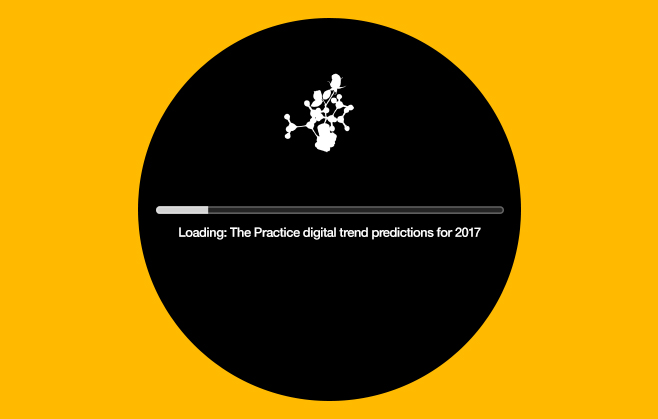
Digital and marketing trends for 2017
In terms of social media, connectivity, new apps and smart devices, 2016 has been a year of revolutionary digital innovation. But which trends will dominate the new year, and how will they impact our marketing efforts?
1. 360-degree and live video
One of the biggest trends last year that can only grow further, is the prevalence of video. Back in April, Facebook launched its Live feature, enabling real-time broadcasts. Brands quickly jumped on the update, with online retailers such as ASOS producing some of the most watched content. ASOS has used the platform to broadcast everything from styling models, to competitions, with these cleverly intended to promote the company’s products. Other examples include beauty brands such as Benefit, who have used it to showcase live make-up tutorials and expert advice, while other brands such as McDonalds, Matches Fashion, and AirBNB have partnered with celebrity guests to host demonstrations, discussions and fan chats. Then with the launch of Facebook 360, broadcasters were able to transform their live-streams, allowing viewers to experience all angles as videos played out. Now, with the likes of Snapchat, Instagram Stories and Instagram Live continuing to grow in popularity, 2017 looks set to be another year of engaging and interactive video content.
2. Chatbots and AI
Last year, Facebook launched over 34,000 chat bots on its Messenger app. Developers quickly came on board, allowing a number of brands to improve their customer features. Companies such as American Express leveraged the technology, sending notifications such as restaurant recommendations, booking and event reminders, and transaction receipts. We see brands continuing to use bots to learn customers’ habits and preferences, in turn delivering a tailored experience. AI has also advanced enormously where Google Assistant and Siri are concerned, with these tools becoming a part of our everyday lives. With an increasing number of users conducting voice searches via their smartphones, we envisage brands updating their apps and mobile sites to prepare for potential customer actions.
3. Augmented Reality
For a number of brands and especially retailers, AR has allowed for an immersive customer experience in store. The likes of Tesco and John Lewis for example, have demonstrated how customers can see products in their home via augmented reality catalogues, while clothing brands such as Lacoste have enabled shoppers to virtually try on products through their tablets or smartphones. Then Pokemon GO became one of the hottest apps of the year, and placed AR technology centre stage, which may lead other mobile app developers to combine AR and gamification. And just before Christmas, Snapchat reportedly purchased augmented reality start-up, Cimagine Media, indicating where the platform might be headed. The acquired company currently has an app that employs AR technology, allowing users to see what products would look like in their homes- might Snapchat soon be using similar technology to help partnering brands advertise and sell to users?
4. Native Advertising
With native ad spend predicted to drive 74% of all US ad revenue by 2021, we imagine marketers will be producing a wealth of creative content in 2017. As customers grow increasingly sceptical of overt sales tactics, native advertising will become even more crucial for generating consumer advocacy. With this in mind, we see brands shifting their content marketing strategies to advertise via more organic methods such as their online blogs, or utilising influencer collaborations for example.
5. Mobile advertising
A reported 420 million people were estimated to use mobile ad-blocking software as of last year, indicating marketers have to take care this year when it comes to the type of content they push out to our smartphones. This will mean more targeted ads such as push notifications based on users’ data and purchase history, or more short-form video content published to Instagram and Facebook. We might see brands also start to use AI in the form of bots on mobile messaging apps such as Facebook Messenger, WhatsApp and WeChat in order to deliver more personalised recommendations which don’t feel like ads.
Consumers are wary of being “sold to”, so to us, the key for brands this year will be to combine visual storytelling with the latest technological trends in order to create innovative content. Which digital, tech or marketing trends do you predict will explode next year? And which are you most looking forward to see rise? We’d love to hear your thoughts, so please tweet to us @PracticeDigital and share your comments on our Facebook page.




